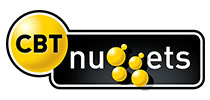در حال حاضر محصولی در سبد خرید شما وجود ندارد.

در این روش نیاز به افزودن محصول به سبد خرید و تکمیل اطلاعات نیست و شما پس از وارد کردن ایمیل خود و طی کردن مراحل پرداخت لینک های دریافت محصولات را در ایمیل خود دریافت خواهید کرد.


CompTIA Linux+ (XK0-005) Online Training

آموزش اتوماسیون شبکه Ansible Red Hat

نحوه ایجاد و نصب یک سیستم فایل لینوکس

Python and Ansible Automation for Juniper Networks Online Training

Red Hat Certified System Administrator (RHCSA) Exam EX200 Online Training

دستورات شبکه در لینوکس برای مدیران سیستم

نحوه اجرای دستورات مربوط به فایل ها در لینوکس

اتوماسیون شبکه ها با Ansible

Cisco CCNP Automating and Programming Cisco Service Provider Solutions (300-535 SPAUTO) Online Training

اتوماسیون پیشرفته شبکه با سیسکو و پایتون
✨ تا ۷۰% تخفیف با شارژ کیف پول 🎁
مشاهده پلن ها